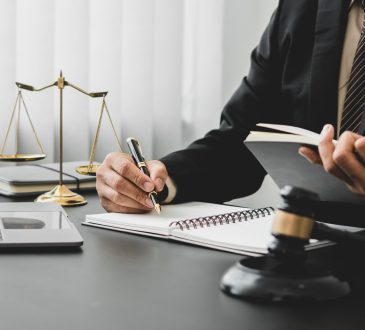
Employee discrimination lawsuits and civil rights protections in New York are drawing sharper focus in 2025 as workplaces adapt to AI-driven hiring systems, hybrid schedules, and new compliance requirements. Across industries — from transit and healthcare to finance and technology — workers are increasingly invoking state and city civil rights laws to challenge bias, harassment, unequal pay, and retaliation.
Recent cases, including the MetroNorth Discrimination Lawsuit, highlight how systemic inequities can surface within large public and private employers. These lawsuits don’t just resolve individual claims; they expose broader workplace patterns, prompt internal investigations, and often drive organizational reforms that make policies more equitable.
This guide outlines the most common forms of workplace discrimination in New York, the laws that protect employees, how litigation promotes accountability, and what remedies are available when rights are violated.
Common workplace discrimination cases emerging in 2025
New York’s 2025 caseload reflects both familiar and evolving forms of bias. A few patterns stand out:
- AI screening and background tools: Automated résumé filters, personality assessments, and attendance analytics can create disparate impact, especially on women, older workers, people with disabilities, and racial minorities, when algorithms are trained on skewed data. Employers are being pressed to validate tools and audit outcomes.
- Pregnancy, lactation, and reproductive health decisions: With the federal Pregnant Workers Fairness Act in effect and New York Labor Law § 203-e on the books, more employees are testing whether employers provide reasonable accommodations, pumping space/time, and freedom from discrimination tied to personal health decisions.
- Disability accommodations in hybrid workplaces: Long COVID, anxiety, and other conditions remain frequent ADA and New York State Human Rights Law (NYSHRL) issues. Requests for remote or flexible schedules, modified duties, and leave extensions continue to fuel disputes.
- Hair and cultural expression: The CROWN Act bans hair-based discrimination. Cases involving protective styles, grooming codes, and customer-facing role requirements still surface, particularly in service industries.
- Equal pay and transparency: New York City and statewide salary transparency rules empower pay equity claims. Misaligned posted ranges, opaque promotion criteria, and bonus disparities are drawing scrutiny.
- Age discrimination in layoffs: After years of restructuring in tech and finance, older employees increasingly challenge RIF criteria, performance rankings, and algorithmic “fit” metrics.
- Retaliation: The most common companion claim. Complaints to HR or agencies, requests for accommodations, or participation in investigations should not trigger discipline or termination. Yet in practice, retaliation allegations often anchor lawsuits.
Taken together, the 2025 picture is clear: technology, transparency mandates, and modern accommodations are where policy meets practice, and where many cases start.
Civil rights laws safeguarding New York employees
Employees in New York benefit from a layered framework of federal, state, and local protections.
Federal laws
- Title VII of the Civil Rights Act: Prohibits discrimination and harassment based on race, color, religion, sex (including sexual orientation, gender identity, and pregnancy), and national origin.
- ADA and ADAAA: Require reasonable accommodations and prohibit disability discrimination.
- ADEA: Protects workers 40 and older from age discrimination.
- Equal Pay Act and Lilly Ledbetter Fair Pay Act: Address wage disparities and accrual of pay claims.
- Pregnant Workers Fairness Act and the PUMP Act: Strengthen accommodation and lactation rights.
Generally, employees in New York have up to 300 days to file a charge with the EEOC for Title VII, ADA, and ADEA claims (New York is a deferral state).
New York State Human Rights Law (NYSHRL)
- Coverage is broad, applying to virtually all employers.
- Harassment need not be “severe or pervasive.” A single incident can be enough if it rises above petty slights or trivial inconveniences.
- Protections extend to non-employees (contractors, vendors) in harassment contexts.
- Remedies include compensatory and, in many employment cases, punitive damages and attorney’s fees.
Additional New York statutes bolster protections, such as Labor Law § 203-e (reproductive health decisions) and expanded whistleblower protections under Labor Law § 740.
New York City Human Rights Law (NYCHRL)
- Often more protective than state and federal law and interpreted liberally.
- Covers caregiver status, gender identity and expression, and bans hair discrimination (mirroring the CROWN Act), salary history inquiries, and certain credit checks.
Filing venues and timing
- Employees can pursue claims with the EEOC, the New York State Division of Human Rights, the NYC Commission on Human Rights, or in court. Deadlines vary.
- Lawsuits against public entities may require a notice of claim, sometimes within as little as 90 days, so speed matters for transit and other public authorities.
These overlapping laws give New Yorkers multiple avenues to challenge discrimination, with city law frequently filling gaps and providing broader remedies.
The role of lawsuits in promoting accountability at work
Lawsuits do more than compensate an individual: they change workplaces.
- Discovery uncovers patterns: Internal emails, pay data, complaint logs, and algorithmic outputs can reveal systemic issues, far beyond the initial allegations.
- Injunctive relief drives reform: Settlements and judgments can require training, policy rewrites, salary audits, centralized discipline review, and independent monitoring.
- Deterrence and transparency: Public filings and media coverage motivate compliance. Even where arbitration clauses exist, agency actions and court cases set norms that ripple across industries.
- Class and collective actions: When many workers face the same barrier, group litigation aligns incentives and creates lasting fixes.
For unions and public employers, grievances and agency charges can run in parallel with lawsuits, creating multiple pressure points to correct inequities. In short, litigation is both a remedy and a catalyst for better policies.
Legal remedies available to victims of bias or retaliation
Available remedies depend on the statute, venue, and employer, but typically include:
Monetary relief
- Back pay: Lost wages and benefits from the unlawful act to judgment.
- Front pay or reinstatement: Compensation for future losses when returning isn’t feasible.
- Compensatory damages: Emotional distress, reputational harm, out-of-pocket costs.
- Punitive damages: To punish egregious misconduct (available under NYCHRL and many NYSHRL employment cases: under Title VII, subject to caps based on employer size).
- Attorney’s fees and costs: Often recoverable for prevailing employees.
- Interest and, in specific statutes (e.g., Equal Pay Act), liquidated damages.
Equitable and injunctive relief
- Policy changes, manager training, EEO posting, and monitoring.
- Clean personnel records: Expunging write-ups or false performance critiques.
- Reasonable accommodations: Modified schedules, equipment, or remote work.
Process and deadlines
- Federal claims typically start with an EEOC charge (300-day deadline in New York). State and city administrative filings have their own timelines. Most court actions under NYSHRL and NYCHRL carry a three-year limitations period, but exceptions exist.
- Special rules for public employers: Certain authorities require prompt notices of claim before a suit.
Given the procedural traps, many workers consult employment counsel early. Firms experienced in New York civil rights litigation, such as the Jacob Fuchsberg Law Firm, regularly assess venue strategy, deadlines, and damages models tailored to the facts.




